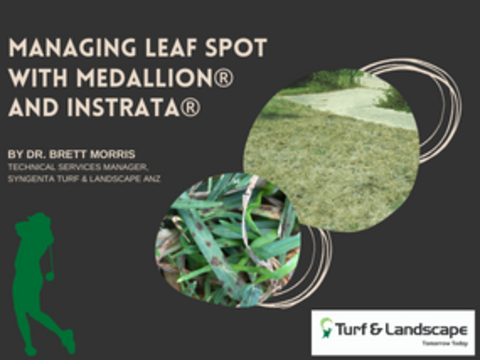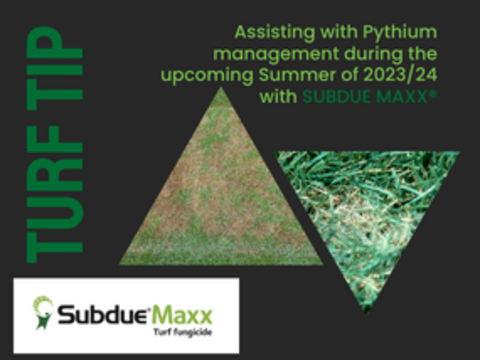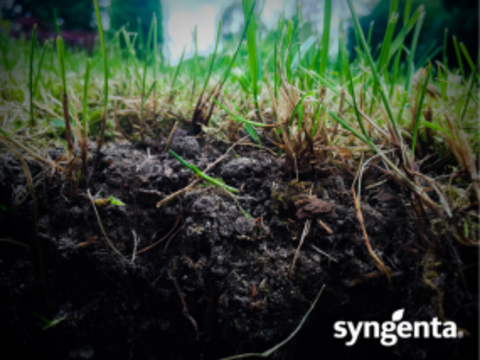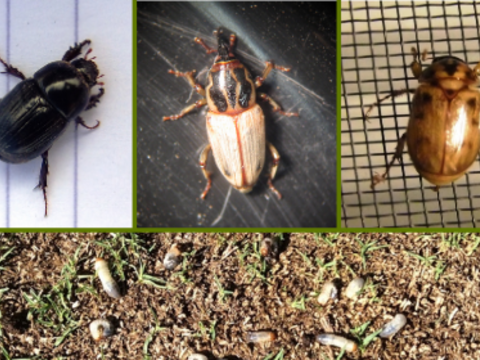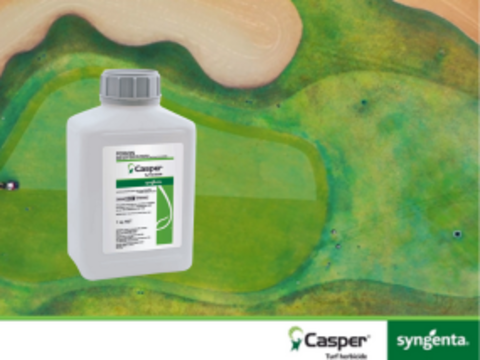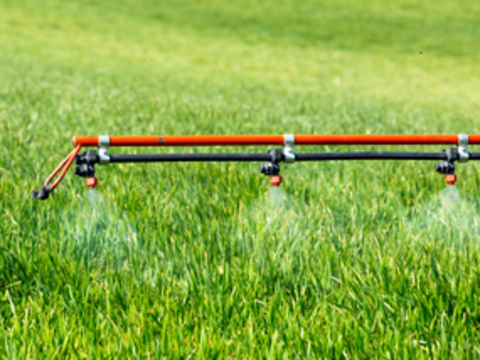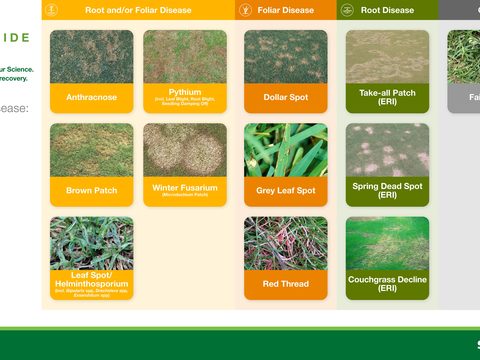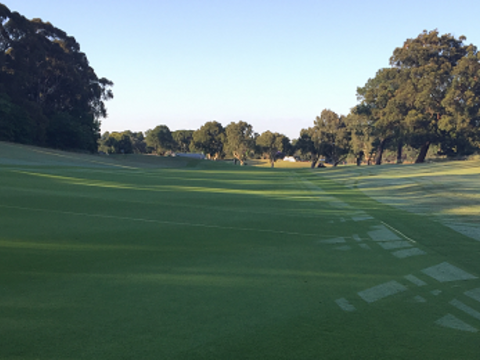What makes CASPER different to other herbicides?
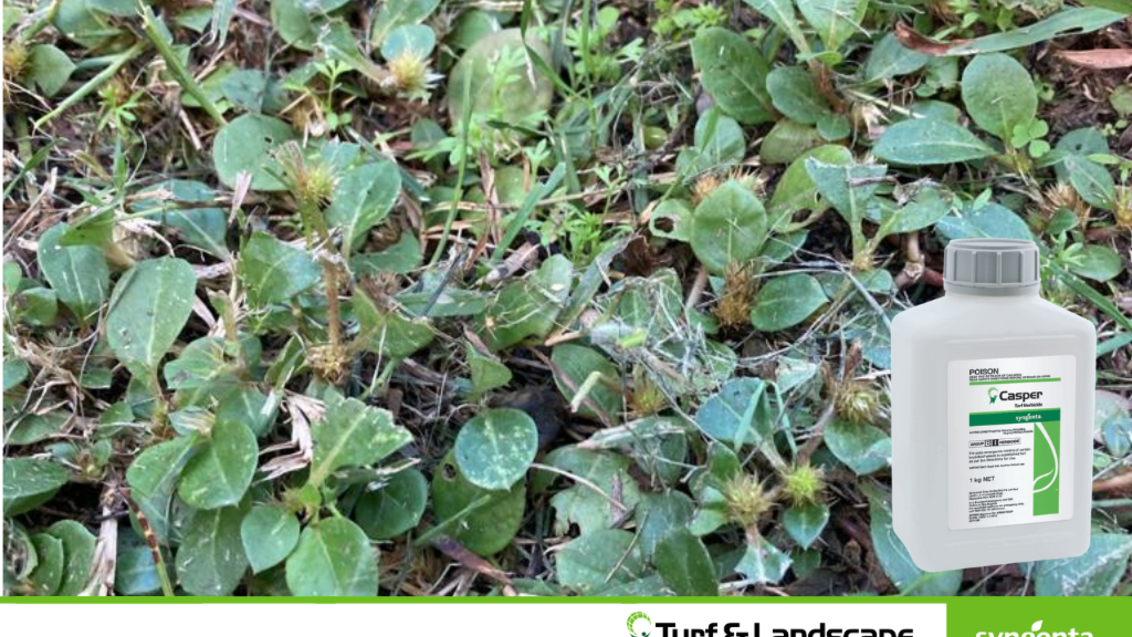
Excellent control of hard to kill weeds
CASPER Herbicide is the powerful combination of well-proven Dicamba with the newer active ingredient, Prosulfuron. Specifically developed for use by turf professionals to deliver broad-spectrum, highly effective weed control in a smaller, easier-to-handle package. The result is a fast-acting product that controls hard to kill broadleaf weeds, while being low impact on the environment with a more convenient application.
A clever combination
The two active ingredients in CASPER operate at different rates within the target. Together they are perfect partners for broadleaf weed management, selected specifically for complementary action.
CASPER contains 500 g/kg of Dicamba – a Group I, benzoic acid which penetrates the leaves, shoots, and roots, and is readily translocated in xylem and phloem to all parts of the target weed. This active ingredient accumulates in leaf and root tips.
Dicamba mimics turfgrass hormones causing uncontrolled cell division and growth – essentially causing the target weed to try to grow at an accelerated and uncontrolled rate. This rapid growth response places considerable pressure on the supply of critical amino acids that support it.
Dicamba is a trusted product on the market that has been around for many years. What makes CASPER different to other herbicides on the market is the combination of the Dicamba with Prosulfuron.
CASPER contains 50 g/kg of Prosulfuron – a Group B sulfonylurea. It is absorbed by roots and leaves with extensive translocation in both the xylem and the phloem to all parts of the target weed.
Prosulfuron is an Acetolactate Synthase (ALS) inhibitor which cuts off the supply of those critical amino acids needed by the plant for the accelerated growth caused by Dicamba. Starving the target weed of these desperately needed proteins. The combination of the two active ingredients leads to complete desiccation of the weeds.
Prosulfuron offers an excellent resistance management partner. It belongs to a different group (Group B) so offers control of weed bio types that may have over time developed resistance or tolerance to commonly used broadleaf weed control herbicides.
Dicamba is the faster working of the two active ingredients in CASPER, and the early results observed can be attributed to it. Whereas Prosulfuron is slower acting, but extremely effective in delivering the complete kill. In combination they create a highly efficacious broadleaf weed control solution, a stronger control solution than either could be on their own.
Convenient and sustainable weed control
The standard rate for dicamba – without Syngenta’s smart formulation technology – is 4 L/ha. CASPER’s unique formulation can be applied at around 1 kg/ha, due to the high active constituent loading. This means less product is required on-site, while the lower rate of active ingredient per hectare means a low impact on the environment.
The formulation also allows for a vast reduction in packaging size – with CASPER supplied in 1 kg packs rather than the usual 20 L drums. The smaller pack is easier to transport and the smaller, more user-friendly containers reduce the HSE risks of lifting heavy drums of chemical. It also allows for easier disposal of containers.
CASPER represents innovation in formulation and packaging, as Syngenta looks to reduce its carbon footprint. The product’s formulation with a high active constituent loading has a positive impact on the environment by reducing carbon in the transport system due to smaller and lighter packaging, and importantly a reduction in waste material to be disposed of at the end of the product’s use.
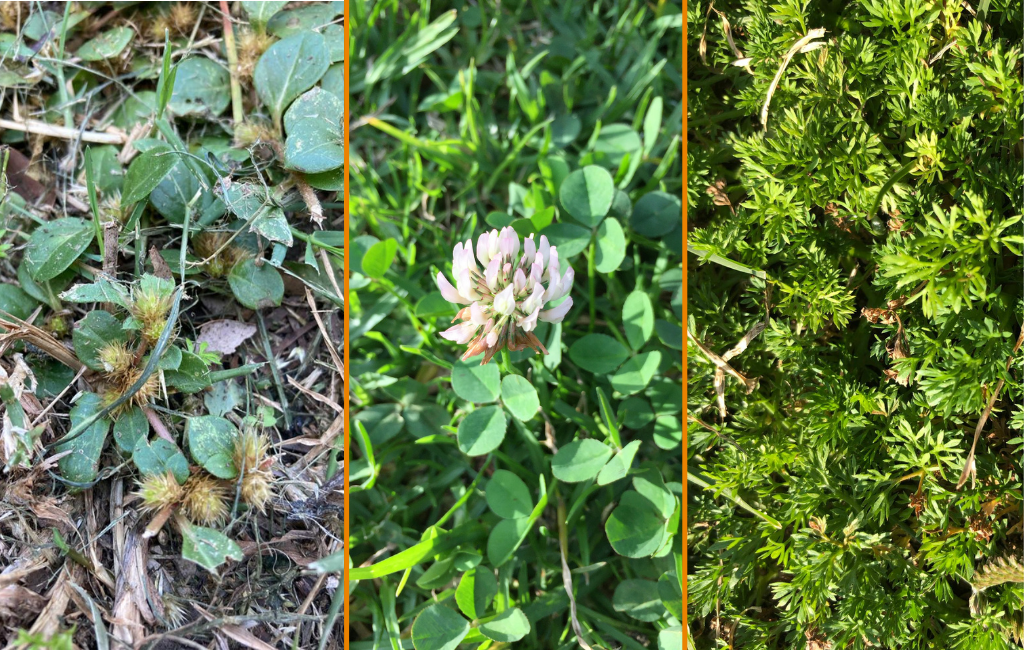
Fig 1. CASPER Herbicide provides excellent control of hard to kill weeds such as Khaki Weed, White Clover and Bindii.
Post-emergent application timing
Most annual broadleaf weeds are more active over winter, so it’s worth getting on top of troublesome species like Bindii and White Clover from autumn to spring; before they cause problems by competing against your turf. Control weeds like Bindii before they reach flowering to reduce their seed banks and manage populations of this difficult-to-eradicate weed. Khaki Weed should be controlled at first sight in the spring and before flowering in summer.
Incorporate a highly effective post-emergent solution like CASPER Herbicide into your autumn management plan to get on top of your weed control before flowering.
CASPER can be tank mixed with MONUMENT LIQUID and BARRICADE for additional control.
Mixing
CASPER is an innovative water dispersible granule formulation (WG); a formulation consisting of granules for dispersion in water. It mixes completely with water and produces a homogenous easy to apply suspension.
CASPER is a high quality WG formulation that is easy-to-measure and will not dust like wettable powders. When you add the granules to water in a spray tank, the solution quickly disperses to form a fine particle suspension in the liquid. It’s important to note that for this formulation type, constant agitation is recommended to ensure best suspension in tank.
CASPER is a post-emergent herbicide that is taken up by leaves, shoots, and roots of target weeds. Application targeted towards delivering CASPER to thoroughly cover the leaves and shoots is best. Application with a non-ionic surfactant is highly recommended. CASPER can be washed off the leaves and into the soil to promote root uptake for complete systemic action.
Critical application notes:
- Adding a non-ionic surfactant is highly recommended at 0.25 – 0.5 % v/v ratio. This helps ensure maximum contact between the chemical and the target and is particularly important for low dose / slow moving herbicides such as the sulfonyl urea group.
- Ensure the spray is delivered as a coarse spray droplet as a minimum – no smaller.
- Apply in a total volume of 400-800 L / ha – using the higher volume in heavy weed infestations or higher cut turf.
- CASPER should not be applied using equipment carried on the back of the user.
Be sure to observe the mixing instruction for CASPER with regards to the addition of a non-ionic surfactant. Effective & Efficient Tank Mixing practices are important for getting the most out of the products you’re using.
A few things to note about CASPER:
- CASPER is safe to use on a variety of warm and cool season grasses – with the clear exception of Stenotaphrum spp. (Buffalo grass) due to the Dicamba component.
- Can be used on: Carpet grass, Couch and Couch hybrids, Kikuyu, Paspalum, QLD Blue couch, Zoysia, Bent grass, Fescue and Perennial Rye grass.
- Do not apply CASPER to golf course putting greens
- Do not apply CASPER to Buffalo grass
- Do not apply CASPER to turf that is not well established
Before using product, please consult the product label.

